From the CEO’s desk
Friends are at the heart of everything that’s done at Doctors for Life. There is an African proverb which says that one person’s arms cannot encompass a Baobab tree. We at DFL know it so well. It is impossible for us to accomplish everything by ourselves. We want to use this opportunity to thank everybody who contributed to our legal costs concerning the ‘Dagga’ case. Everything has been paid.
We value our friends who make this ministry possible. Thank you so much for your prayers and support. May the Lord “meet all your needs according to the riches of his glory in Christ Jesus” (Phil. 4:19).
Dr Albu van Eeden
Our Legal Corner
When reading newspaper articles pertaining to the use of dagga in South Africa, it is often difficult to understand the equality and discrimination debate in terms of the constitution as it relates to the dagga trial. To add to this difficulty, the daily proceedings during the trial in the High Court was streamed on the internet and many who watched them found it difficult to understand what was really happening in Court.
Chapter Two of the Constitution contains the so-called Bill of Rights. In terms of its provisions, the State must respect, protect, promote and fulfil the rights in the Bill of Rights which include issues such as equality, freedom of speech, freedom of religion and others.
The Plaintiffs in the so-called “dagga trial” are claiming, inter alia, for an order declaring that the legislative prohibition against the possession and use of Cannabis (Dagga) by adults is inconsistent with the Constitution and therefore invalid. The South African Constitution is the supreme law of the Republic and any law or conduct inconsistent with it is invalid and the obligations imposed by it must be fulfilled.
Allow me to deal with only one of the issues referred to by the Plaintiffs in their claim. In terms of Section 9 of the Bill of Rights everyone is equal before the law and has the right to equal protection and benefit of the law, including the full and equal enjoyment of all rights and freedoms.
In terms of section 9, the state or any person may not unfairly discriminate directly or indirectly against anyone on one or any unspecified grounds, including race, gender, sex, pregnancy, marital status, ethnic or social origin, colour, sexual orientation, age, disability, religion, conscience, belief, culture, language and birth. The equality clause distinguishes between two forms of unfair discrimination: discrimination on the specified grounds, for example, race, gender, disability and religion; and discrimination on those grounds which are not specified. In relation to the former, section 9 provides that prima facie proof of discrimination will create a rebuttable presumption that such discrimination is unfair. An applicant who alleges that he or she is discriminated against on an unspecified ground is not assisted by such a presumption. It is also of great importance to take note of the provisions of section 9(5): “Discrimination on one or more of the grounds listed in subsection (3) is unfair unless it is established that the discrimination is fair”.
What then will be required of a Plaintiff who is of the opinion that the provisions of a particular law impose burdens, obligations and disadvantages on him beyond those applicable to other persons? What if he feels that he is unfairly discriminated against, notwithstanding the provisions of section 9 of the Constitution, and finds himself to be not equally protected before the law? To give an answer, one has to enquire as to the following: (1) Does the provision differentiate between people or categories of people? If so, does the differentiation bear a rational connection to a legitimate governmental purpose? If it does not, then there is a violation of section 9. Even if it does bear a rational connection, it might nevertheless amount to discrimination. (2) Does the differentiation amount to unfair discrimination?
To answer the last question, does the differentiation amount to unfair discrimination, a two-staged analysis is required:
- Firstly, does the differentiation amount to “discrimination”? If it is on a specified ground, then discrimination will have been established. If it is not on a specified ground, then whether or not there was discrimination would depend upon whether, objectively, the ground was based on attributes and characteristics which have the potential to impair the fundamental human dignity of persons as human beings or to affect them adversely in a comparably serious manner.
- If the differentiation amounts to “discrimination”, did it amount to “unfair discrimination”? If it had been found to have been on a specified ground, unfairness would be presumed. If on an unspecified ground, unfairness would have to be established by the complainant. The test of unfairness focuses primarily on the impact of the discrimination on the complainant and others in his or her situation. If the differentiation was found not to be unfair, there would be no violation of section 9.
- If the discrimination is found to be unfair then a determination would have to be made as to whether the provision could be justified under the limitations clause, section 36 of the constitution.
Where does it leave us in the dagga issue? Now it is for Doctor’s for Life, the 8th Defendant in the case, to provide the Court with expert medical evidence which will outweigh any findings of unfair discrimination or unequal treatment. Through presenting scientific evidence, DFL hopes to convince the court that cannabis is a “gateway drug” with all its negative consequences. That cannabis in itself is harmful enough to justify keeping it an illegal substance.
Addiction – there is hope

Drug addiction is a reality that we can no longer ignore. It affects the parts of the brain that are involved in learning and memory, rewards and motivation and has control over behaviour.
The DSM-5 classifies addiction as a Substance Use Disorder and is thus seen as a disease that affects both brain and behaviour. Because it is a disease it can be treated but it is not that simple. The main aim of treatment must be to assist the addict to not only stop using drugs, but to remain drug-free and become a productive community and family member.
According to the National Institute of Drug Abuse (NIDA) the following principles must be adhered to when treating drug addicts:
- One must bear in mind that drug abuse affects the brain and for that reason drug abusers are at risk for relapse even after long periods of abstinence.
- People are different and no single treatment is appropriate for everyone.
- Treatment must be readily available because potential patients can be lost if they are emotionally ready to receive treatment but it is not immediately available.
- Treatment must tend to the multiple needs of the individual and not just the drug abuse.
- The patient must ideally remain in treatment for an adequate period of time.
- Behaviour therapies – including individual, family and group counselling are common forms of treatment for addiction.
- Treatment plans must be assessed regularly and modified to accommodate the patients changing needs.
- Many drug-addicted individuals also have other mental disorders and must be assessed for that as well. They must also be tested for HIV/AIDS, hepatitis B and C and tuberculosis. All the diagnosed disorders and diseases must be treated.
- Detoxification is only the first stage of addiction treatment but does not change the long-term abuse.
- Drug use should really be monitored throughout the treatment as lapses may occur during treatment. In South Africa there are relatively few government facilities for the treatment of addiction. The bulk of the burden at this stage is carried by the private sector which includes many faith based facilities.
https://www.drugabuse.gov/publications/principles-drug-addiction-treatment-research-based-guide-third-edition/principles-effective-treatment
LifeChild



The first week of January was a great start to this new year! A volunteer from England was eager to spend some time with our children. We visited centres and played different fun games with the children which really put a smile on their faces! It was a special time even for us to be around the children just showing them love and being interactive with them.
Our volunteer taught the children some sewing skills after fixing the broken machine and they made little skirts together for the three year-old twin girls going to crèche this year.
We were very grateful to have had a donation to purchase new school uniforms for our older teens along with new shoes, new school bags and stationary!
We are very excited to see the garden at our centre growing so well and yielding some of the biggest eggplants and cabbages we have ever seen! The garden also has tomatoes, beetroot and butternut that are growing very well. This is great news for us because it means we will spend less on food for the centre and be able to concentrate on some other needs at the centre. For example, one of the buildings where we feed the children has been damaged by heavy rains and has since been put together using mud and wood. It is our desire to build a more stable unit to continue feeding the orphans in the Esifuleni area.
Prostitution
Feedback from the Prostitution Exit Program

We would like to thank you for praying for our project. God provided new cupboards for the bedroom we accommodate our ladies in. Thank God for sending donors from Switzerland to carry the costs of these cupboards.
We are also very blessed with donations of clothes that come from time to time. We still need small sizes skirts (32, 34, 36) or material that we can make skirts from. The donors from Switzerland also bought us an over-locker machine and we have also have a standard sewing machine available to do sewing.
The one ex-prostitute lady who stayed at our safe house passed her matric exams last year. Please continue to pray for the project. Ever since it started in the early 2000’s the project never stopped and we still do outreaches on Fridays to Durban and Pietermaritzburg.
Soli Deo Gloria
Abortion
In the USA we are so grateful for our new president Donald Trump. Yes, he is brash and sometimes talks like a ruffian but he is truly defending Christianity and the unborn. We often joke that he has the personality of a junkyard dog but a very brave and smart one. This year, at our annual March for life in January, Trump addressed the crowd. This is extremely rare. He also just launched a new Human Health Services (HHS) branch dedicated to protecting medical doctors and nurses who are opposed to abortion and are being coerced to perform them.
We also have a petition running by Personhood Alliance that has already gained thousands of signatures asking Trump to make an executive order that directs all federal agencies to recognize the personhood of all children in the womb. When the petition was first posted it gained 700 signatures within the first half an hour. It is now in the thousands. During the election we had the slogan “Time to Drain the Swamp.” This refers to the corruption that has been so prevalent in our federal government and we often refer to Washington D.C. as the swamp. It takes a brave and determined man to “Drain the Swamp!”
By Professor Pat McEwen – DFL Volunteer USA
Aid to Africa
Personal Testimonies
Taxi accident near DFL’s Zavora/Sihane Clinic
“One Saturday someone came running to tell us that there had been a taxi accident and that the people were at the clinic door, waiting for help. Onlookers who were also standing by shouted, ‘there are more coming’! Cars brought more wounded people and family members as well as other people from the village who simply wanted to see what was going on. The taxi’s that pass by the hospital easily transport up to 20-30 people sitting on a back of an open pickup truck (bakkie) and so when an accident happens, there are often many people involved.
It was difficult trying to keep focus because everyone was speaking, everyone wanted to be helped first and children were crying. Two of our co-workers who had heard what happened came to the hospital to help their friend Ester who was there for a visit and Elke Epp. Elke is a nurse from Germany who feels a calling to work at the new DFL clinic in Chikuluma in Malawi which is in the process of registration. She currently lives there with her husband. Mario Rocha, the manager of our Sihane clinic and Joy Smith were called as well. We commenced triage to identify those who were most badly wounded to take them to hospital first. Many of the patients needed advanced help that we could not supply at the clinic.
“In the beginning I didn’t really think it was so serious” said Esther. “I had never seen anything like it, except on TV or in the news. I had never seen people up close that were so badly wounded. It was chaotic and the many onlookers made things so much more difficult “she explained. The people in general were all frightened because wherever one looked you saw blood and wounds.
Even our visitor helped to take care of the wounded and we split up to take better care of the patients. We checked for vital signs and monitored the children. There was nobody free to help with the driving but after a lot of searching and persuading we found someone willing to take the last patients to Inharrime, 25 km away.
One of the drivers, whose name we don’t have, was asked to help transport the patients to the nearest hospital and had this to say about the incident; “My sister-in-law was also in the vehicle involved in the accident and my brother called me to come to the hospital. She was the one with the broken collar bone. When I came to the clinic I felt compassion for the people. When I was asked if I could help to transport some people to the hospital at Inharrime, I hesitated because I was afraid of getting into trouble with the authorities, but then I decided to help them anyway.”
All together we had 17 wounded people of which 3 were severely wounded, 8 of them were taken to the nearest hospital of which 3 were transferred to another hospital. We thank God that everybody survived.
By Alex Andrade – DFL Volunteer Germany
Outreaches to remote Mozambique villages
“I am so thankful to the Lord that I can still go on some Aid to Africa outreaches even though I have cancer. Although I cannot go as often as I originally did, each one that I am able to be a part of is a blessing. On a field outreach to some needy villages in Mozambique, Benerio Mazivilla, (who works in the DFL Sihane Clinic) helped me, both as an aid and an interpreter. I serve in testing and distributing glasses to those who are in need. Two doctors were also present to examine and treat patients with general and dental care. The areas are pretty remote and people cannot just go to an optometrist in a city to get testing and glasses.
Later I spotted a lady who was an albino, in the cue. I asked Benerio to bring her in for a pair of sunglasses because the African sun often blinds the albino. After giving her the glasses I examined her and found that she already had severe vision loss. She could only count fingers at about 4 feet, even with a –10 lens, the strongest we can test for. I could not help her and was feeling so sorry that we had nothing to help her severe problem. She was almost blind. Prayerfully I looked through our glasses just in case. By God’s grace I found a –15 pair that also were very dark sunglass. When I took away the original sunglasses her face fell but when I placed the new pair on her face she burst into laughter as she could see. Our motto is
“so the blind might see” and it means both physical and spiritual sight. She, like most of our patients, listened intently to the Gospel message and left with a tract in her native language clutched tightly to her chest. There is no joy like seeing someone’s eyes open to the Gospel.”
Professor Pat McEwen has been going on medical outreaches with DFL since 2009.
By Professor Pat McEwen – DFL Volunteer USA
Devotion
Luke Chapter 9 Verse 57 -62
Luke 9:v57. As they were going along the road someone said to him, “I will follow you wherever you go”.
Luke 9:v58. And Jesus said to him, “Foxes have holes and birds of the air have nests but the son of man has nowhere to lay his head”.
Luke 9:v59. To another he said, “Follow me” but he said “Lord let me first go and bury my father”.
Luke 9:v60. And Jesus said to him “Leave the dead to bury their own dead but as for you go and proclaim the Kingdom of God”.
Luke 9:v61. Yet another said, “I will follow you Lord but let me first say farewell to those at home”.
Luke 9:v62. Jesus said to him “No one who puts his hand to the plough and looks back is fit for the Kingdom of god”.
Here we find three different ways that people get to follow Christ. The first person was not invited but felt urged to follow the Lord. Some people may decide to follow Christ because they have a romantic notion about how it’s going to be. Here’s this man with His disciples moving around the country and it’s all so wonderful. But the Lord immediately brought him down to reality by telling him how harsh it would be to follow Him.
The second man was actually called by Jesus. Such a person may feel the calling of the Lord. But he felt a moral obligation to bury his father, a basic duty of decency. But the Lord said to him, “Leave the dead to bury their own dead but as for you go and proclaim the Kingdom of God”. There may be some things we consider to be moral, the right thing to do, the decent thing to do. But when Christ comes he changes that. And sometimes it sets us free because we may be carrying all kinds of moral burdens around God doesn’t expect of us.
The third man said, “I will follow you but let me first say farewell to those at home”. This man was like the first; he took his own initiative to tell Jesus he would follow him. But he had preconditions – “Lord I will follow you but….” Jesus said to him “No one who puts his hand to the plough and looks back is fit for the Kingdom of god”. People who constantly look back become a burden in God’s work because even after being encouraged, they can’t stop looking back.
What a challenge! What a judgement if Jesus says we are not fit for the Kingdom of God if we put our hand to the plough and then look back. These verses tell us that if we decide to follow Christ that it must be with total surrender. It must be without any preconditions and we must be willing to experience discomfort and humiliation.
By Dr. Albu van Eeden
If you change your postal address or e-mail please let us know at
[email protected] so we can update our records and keep in touch with you.
]]>

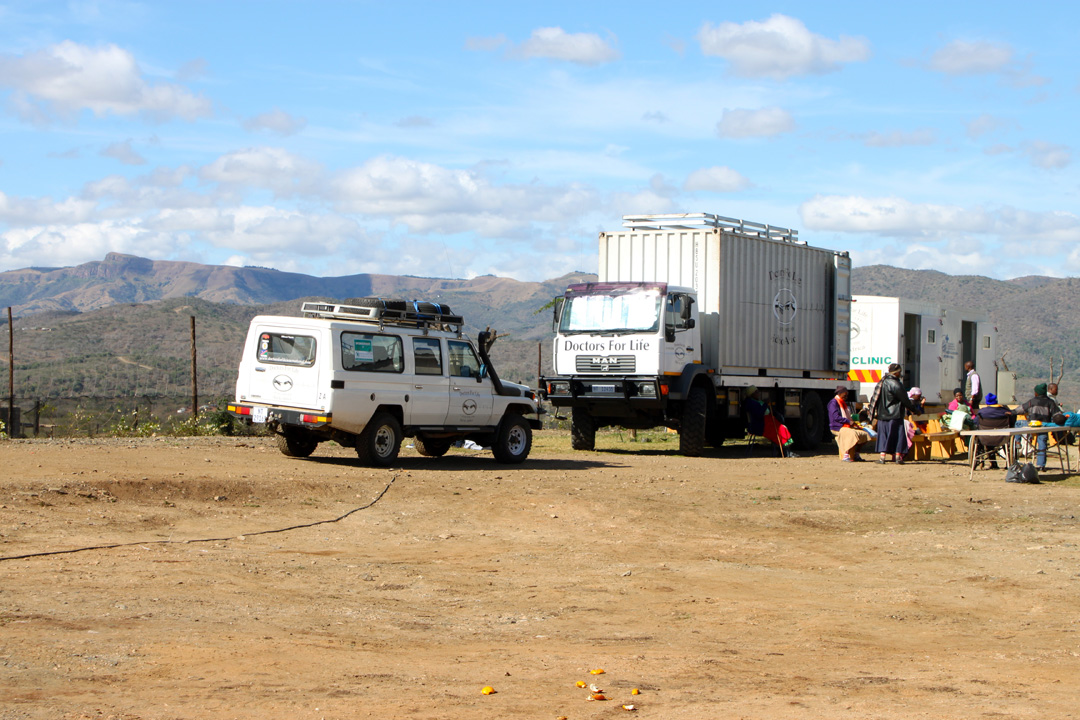
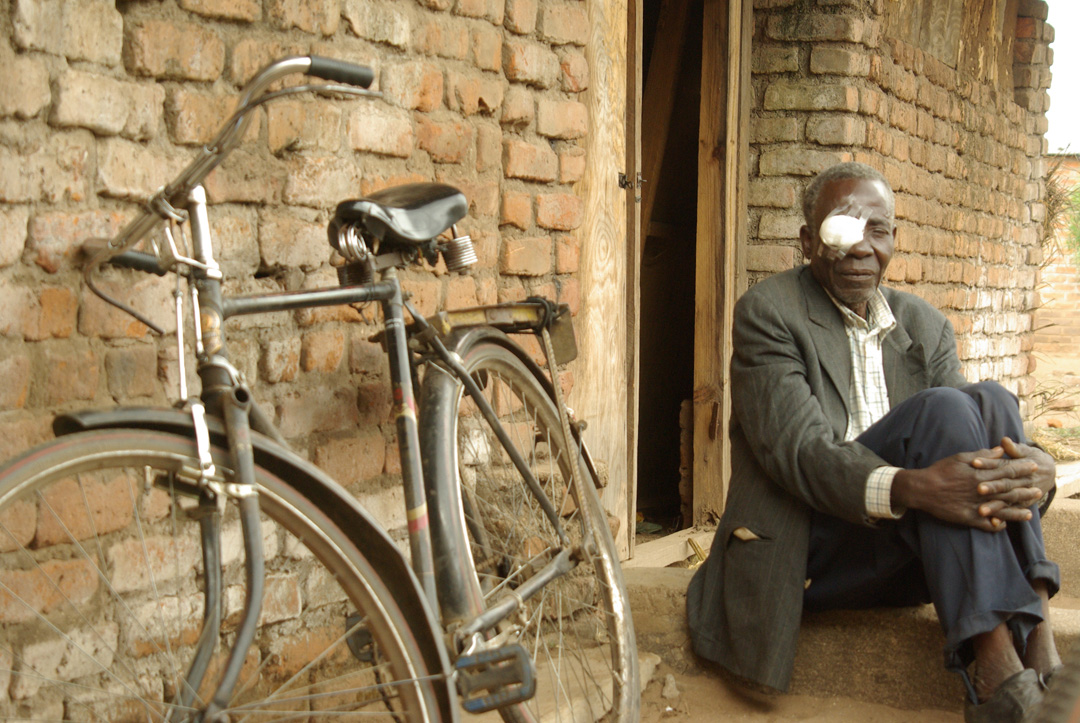
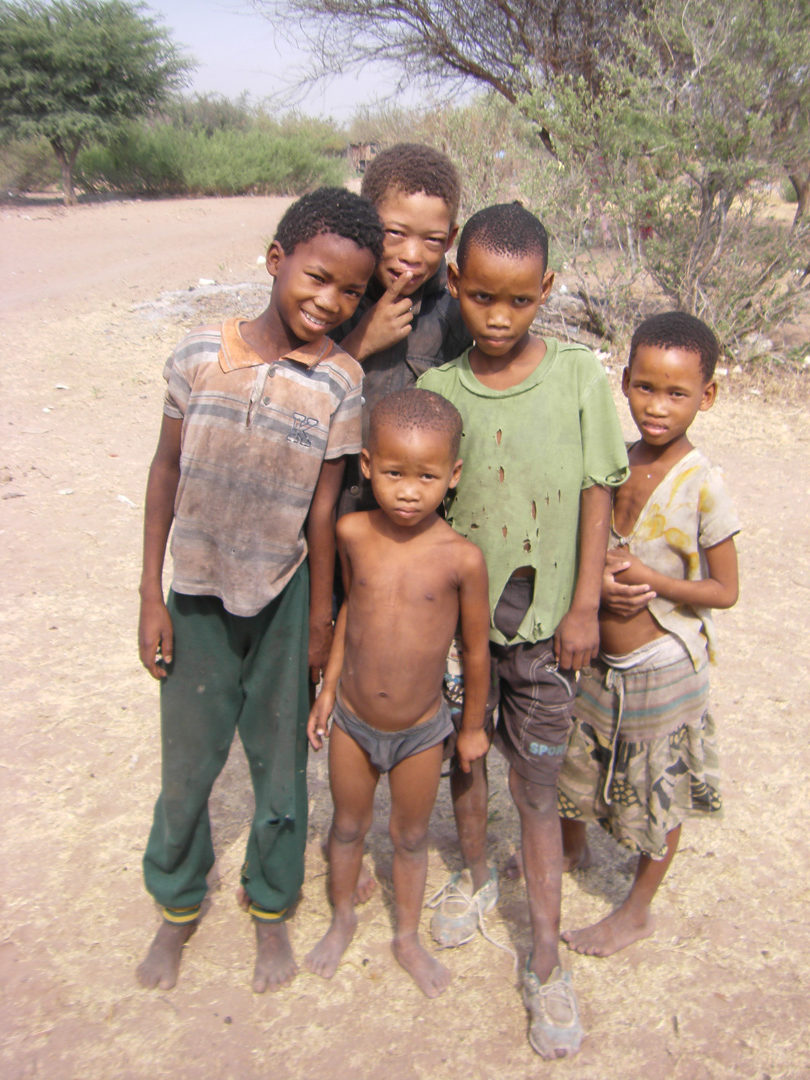










 Pornography has been declared a public health crisis in many states and countries. We cannot close our eyes to the devastating consequences it has on individuals and societies. The statistics are overwhelming.
The Proven Men Porn Survey, conducted by the Barna Group in 2014, found that 64 percent of U.S. men view pornography monthly, with that figure increasing to 79 percent for men between the ages of 18-30. Also, 34 percent of women age 18-30 view pornography monthly. 55 percent of men of 18-30 said they first encountered pornography before the age of 12, while 25 percent of women did.
One pornography website found that it had 64 million global visitors per day, and that nearly 92 billion videos had been viewed in the past year.
The industry feeding these habits is correspondingly large. In 2006, the whole sex industry was estimated to be about $13 billion. (1)
Lawmakers in the USA in the states of South Dakota, Virginia and Tennessee have affirmed the public harm of pornography. (1)
It’s hard to deny that it is wrecking marriages and that people are enslaved to it. The American Academy of Matrimonial Lawyers in a 2003 survey found that in 56 percent of divorce cases, one spouse had an obsessive interest in online pornography. A study published in 2016 found that divorce rates nearly doubled for men and nearly tripled for women who began watching pornography during their marriage. (1)
It is especially our children who are the most vulnerable. They need to be protected from this harmful practice.
The sad fact however, is that some people who are supposed to protect the children are wolves in sheep’s clothing. If you follow the news you will find that the many people standing trail for pornography are often teachers, fathers, grandfathers, pastors, cabinet ministers, social workers, bishops, law enforcement officers, nursery school caretakers and the like.
Something is drastically wrong in our societies and we must to take a good look at ourselves. Are we part of the problem or are we part of the solution?
Pornography has been declared a public health crisis in many states and countries. We cannot close our eyes to the devastating consequences it has on individuals and societies. The statistics are overwhelming.
The Proven Men Porn Survey, conducted by the Barna Group in 2014, found that 64 percent of U.S. men view pornography monthly, with that figure increasing to 79 percent for men between the ages of 18-30. Also, 34 percent of women age 18-30 view pornography monthly. 55 percent of men of 18-30 said they first encountered pornography before the age of 12, while 25 percent of women did.
One pornography website found that it had 64 million global visitors per day, and that nearly 92 billion videos had been viewed in the past year.
The industry feeding these habits is correspondingly large. In 2006, the whole sex industry was estimated to be about $13 billion. (1)
Lawmakers in the USA in the states of South Dakota, Virginia and Tennessee have affirmed the public harm of pornography. (1)
It’s hard to deny that it is wrecking marriages and that people are enslaved to it. The American Academy of Matrimonial Lawyers in a 2003 survey found that in 56 percent of divorce cases, one spouse had an obsessive interest in online pornography. A study published in 2016 found that divorce rates nearly doubled for men and nearly tripled for women who began watching pornography during their marriage. (1)
It is especially our children who are the most vulnerable. They need to be protected from this harmful practice.
The sad fact however, is that some people who are supposed to protect the children are wolves in sheep’s clothing. If you follow the news you will find that the many people standing trail for pornography are often teachers, fathers, grandfathers, pastors, cabinet ministers, social workers, bishops, law enforcement officers, nursery school caretakers and the like.
Something is drastically wrong in our societies and we must to take a good look at ourselves. Are we part of the problem or are we part of the solution?







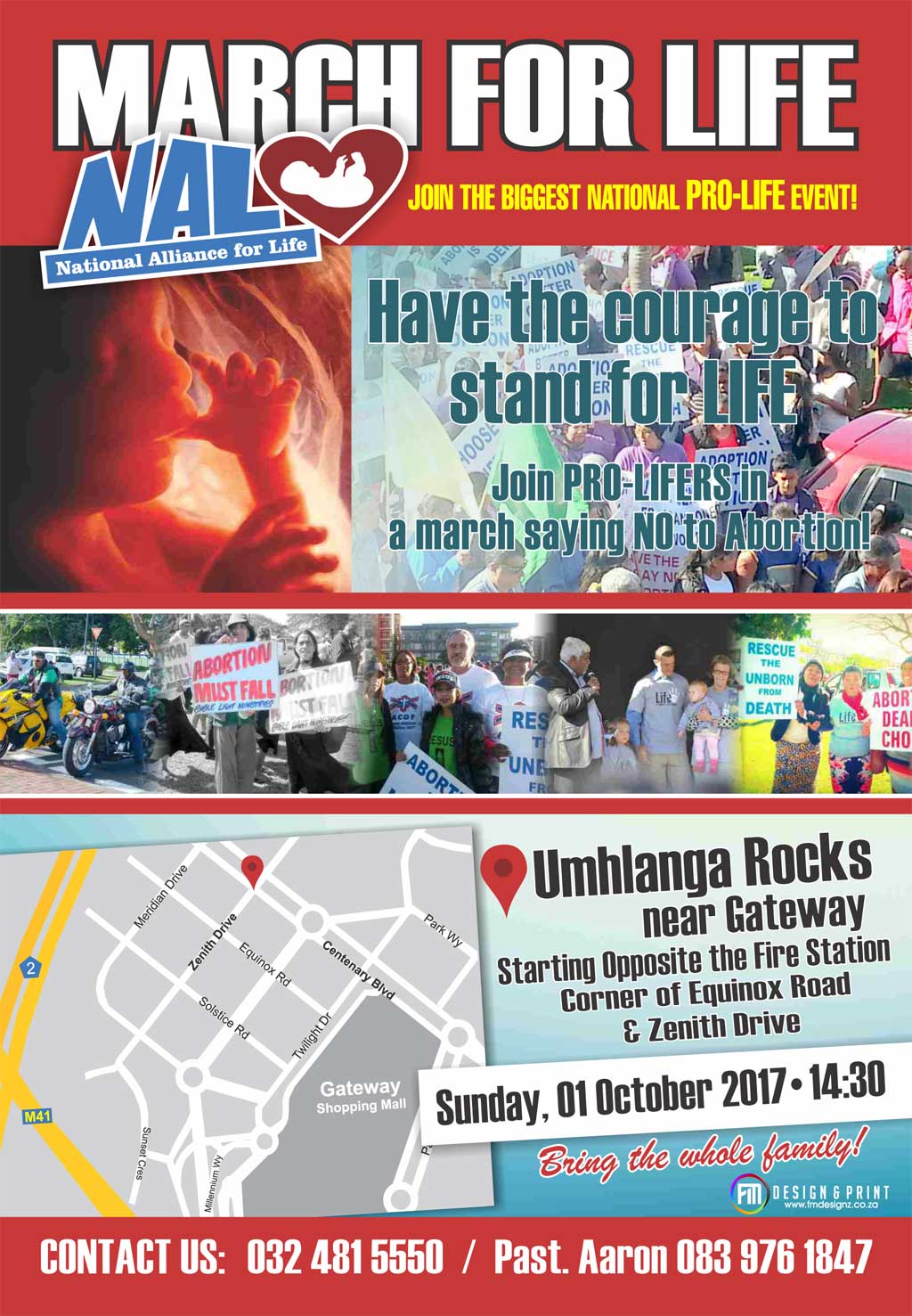
 The National Alliance for Life (NAL) is an umbrella body composed of most pro-life groups, many churches and organizations.
The aim of the March for Life is to:
The National Alliance for Life (NAL) is an umbrella body composed of most pro-life groups, many churches and organizations.
The aim of the March for Life is to:


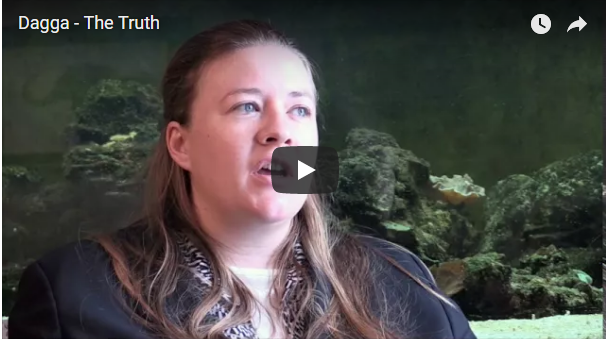

 DFL’s legal team: Helene Davidtz (Attorney from Univ. Pta law clinic), Christo van Eeden (DFL legal counsel), Adv. J Harwood, Senior Adv. Reg Willis, Adv. Mpati Qofa and Adv. Tererai Mafukidze[/caption]
DFL’s legal team: Helene Davidtz (Attorney from Univ. Pta law clinic), Christo van Eeden (DFL legal counsel), Adv. J Harwood, Senior Adv. Reg Willis, Adv. Mpati Qofa and Adv. Tererai Mafukidze[/caption]


